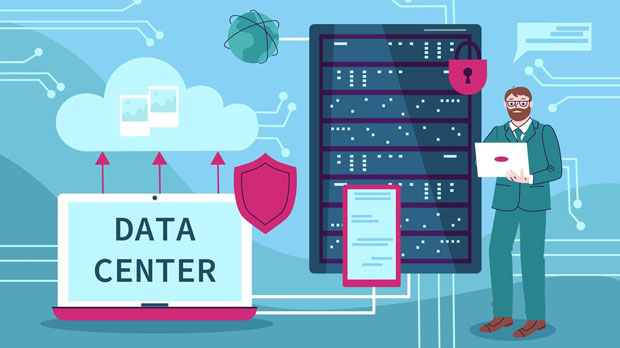Static Residential IP addresses have gained significant attention in residential services due to their unique advantages. Unlike dynamic IPs, static IPs remain constant and do not change over time, providing a stable and reliable online experience. This consistency offers users numerous benefits, particularly in the context of security, convenience, and accessibility. In residential services, Static Residential IP addresses improve online services by ensuring uninterrupted connections, enhancing security measures, and facilitating remote management. This article will explore these advantages in detail, analyzing their implications for residential service users and how they contribute to a better overall experience. 1. Stability and ReliabilityOne of the primary advantages of Static Residential IP addresses in residential services is their inherent stability. Unlike dynamic IPs, which change periodically, static IPs provide a fixed connection point for users. This is especially important for services that require uninterrupted access, such as online gaming, video streaming, and remote work. With a static IP, users can rely on consistent access to their services without the risk of disconnections or disruptions caused by IP address changes.In residential environments where connectivity is crucial for daily tasks, static IPs offer peace of mind. Users can be sure that their devices are always accessible, ensuring the smooth operation of internet-connected devices like smart home systems, security cameras, and other IoT devices. Additionally, for those using Virtual Private Networks (VPNs) or other remote access technologies, static IPs make it easier to maintain secure and stable connections.2. Enhanced SecurityAnother significant benefit of static residential IP addresses is the enhanced security they provide. Static IPs make it easier to configure firewalls, routers, and other security tools to block unauthorized access. Since the IP address remains the same, it allows for more predictable and precise security settings. This predictability is particularly important for remote monitoring systems, where a consistent IP address ensures the system remains secure from unwanted intrusions.For home-based businesses or individuals who handle sensitive data, static residential IPs provide an added layer of security. Static IPs allow for advanced security configurations, such as IP whitelisting, which restricts access to specific devices or networks. This added security is essential for preventing cyber threats such as DDoS attacks, hacking, and phishing attempts, which are more difficult to carry out when the IP address remains unchanged.3. Easier Remote Access and ManagementStatic Residential IP addresses also simplify remote access and management of devices. Whether for personal or professional purposes, remote access to a home network or a specific device is more efficient with a static IP. Remote desktop applications, file sharing, or accessing surveillance cameras are all easier when the IP address is static. For example, a homeowner can remotely access and control their home security system or other smart devices from anywhere in the world, knowing that the IP address will remain the same. This is particularly beneficial for those who travel frequently or have second homes. In business settings, employees working from home or managing remote devices can ensure that their connections remain stable, fostering productivity and reducing downtime.4. Improved Website HostingFor users hosting websites or online services from their homes, static residential IP addresses offer significant benefits. Hosting websites on dynamic IP addresses can cause issues with accessibility, as the IP address may change, making it difficult for users to reliably connect to the site. Static IPs, on the other hand, provide a consistent and reliable address, ensuring that the website or service is always accessible to visitors.For small businesses or individuals hosting personal websites, a static residential IP makes it easier to manage DNS records, SSL certificates, and other technical aspects of website hosting. This ensures that the website remains functional, secure, and easy to access for all visitors.5. Improved Performance for Certain ApplicationsCertain applications and services perform better when used with static IPs. For instance, online gaming, video conferencing, and cloud services benefit from the reliability and consistency that static IP addresses provide. Many gaming services or video streaming platforms prioritize stable connections to ensure high-quality performance, and static IPs help to avoid issues such as lag or disconnections that can arise with dynamic IP addresses.In addition, cloud storage and other cloud-based services are more stable when accessed through static IPs, particularly in households that rely on high-speed internet for multiple users. The consistent IP address improves the overall experience, ensuring faster and more reliable connections for large data transfers and file sharing.6. Improved SEO and Online Reputation ManagementFor businesses or individuals involved in digital marketing or search engine optimization (SEO), static residential IPs offer advantages in terms of online reputation management. Dynamic IP addresses can cause issues when conducting certain online activities, such as web scraping or data analysis, because the IP address may change frequently, resulting in inconsistent results.Static residential IPs offer a more stable environment for these activities. Marketers can ensure that their actions remain consistent and that their online reputation is not affected by the frequent changes in IP addresses. This stability is crucial for businesses that rely on tracking analytics, customer behavior, or online engagement metrics.In conclusion, static residential IP addresses provide significant advantages in residential services, particularly in terms of stability, security, remote access, performance, and online reputation management. These benefits make static IPs an essential choice for households that require reliable and secure internet connections for gaming, remote work, home security, and other essential services. With the increasing reliance on connected devices and remote services, the advantages of static residential IPs are more important than ever. By choosing a static IP, users can enjoy a more stable, secure, and efficient online experience, enhancing both their personal and professional lives.
Sep 04, 2025

































































